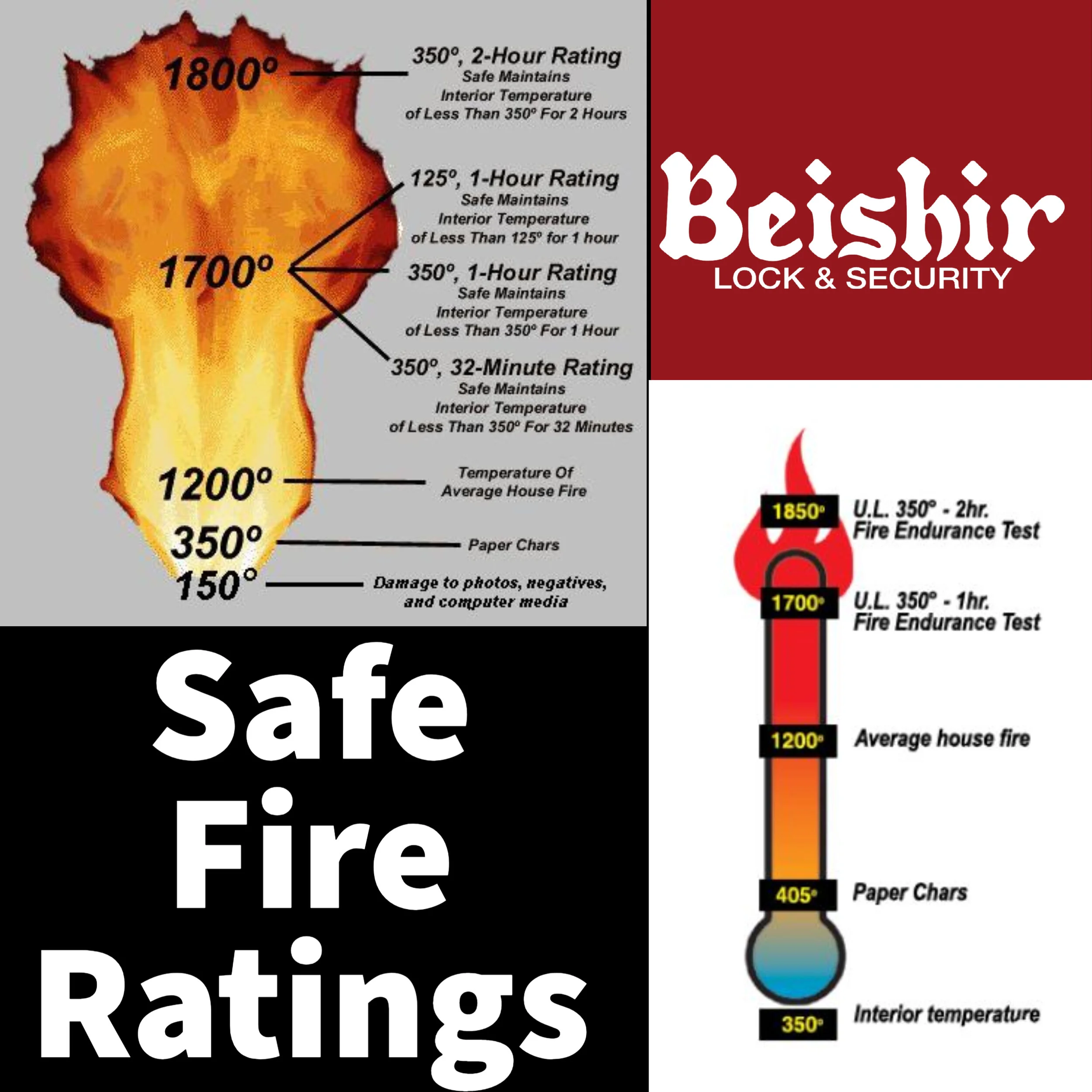Do you really need a home safe?
The first safe dates all the way back to the 13th century BC and belonged to Pharaoh Ramesses II. Since he was rich enough to fund the largest construction project Egypt had ever seen, you can guess he had some goods to keep in that safe!
Since then people have been looking for ways to keep their valuables locked and secure, while still allowing them to be easily accessible. With more and more banks getting away from safety deposit boxes we have seen an increase in customers looking for safe recommendations for keeping their valuables safe at home. The #1 question we get from customers is, “Which one do I need?” There are a lot of options out there and knowing what they are will help prepare you for when you go looking for a home safe.
Two features that you need to be aware of are the burglary ratings and fire ratings. Since not all safes are created equal you need to know hat makes a safe, safe.
When talking about a safe, the first thing we need to talk about is ,“Will it keep someone out?” Now, even the most basic of lock boxes will keep honest people out, but if everyone were honest then we would not need safes. This leads us to the Burglary Ratings. A burglary rating is, is a classification that was developed to help give consumers, service providers and insurance companies an indication of the level of physical security a safe has when attacked with hand tools. There are six different burglary ratings that a safe can receive. Here is a breakdown of each classification: B Class, C Class, UL RSC, UL TL-15, UL TL-30 and UL TL-30x6.
B Class / Fair Protection / Residential: Has a steel door that is less than 1” thick and a steel body that is less than ½” thick.
C Class / Good Protection / Residential: Has a steel door that is at least 1” thick and a steel body that is at least ½” thick.
UL RSC / Better Protection / Residential & Light Commercial:
Constructed in such a way that the door successfully held up to attack from rigorous prying, drilling, punching, chiseling, and tampering attacks for 5 minutes.
UL TL-15 / Best Protection / Heavy Commercial:
Constructed in such a way that the door successfully held up to attack from common hand tools, picking tools, mechanical or portable electric tools, grinding points carbide drills and pressure devices or mechanisms for 15 minutes.
UL TL-30 / Superior Protection / Heavy Commercial:
Constructed in such a way that the door successfully held up to attack from common hand tools, picking tools, mechanical or portable electric tools, grinding points, carbide drills and pressure applying devices or mechanisms, abrasive cutting wheels and power saws for 30 minutes.
UL TL-30x6 / Extreme Protection / Heavy Commercial:
Constructed in such a way that the body and door successfully held up to attack from common hand tools, picking tools, mechanical or portable electric tools, grinding points, carbide drills and pressure applying devices or mechanisms, abrasive cutting wheels and power saws for 30 minutes.
Keeping someone out of your valuables is not the only things safes are good for. Safes also protect your valuables from fire damage. When choosing a safe, remember that the average house fire will reach about 1,200ºF. To put that into perspective, paper starts to char at about 450ºF.
With these two numbers in mind you can understand how the safes are tested. A safe is fire tested by placing it in a furnace and burning it for an extended period at a specific temperature. After the safe is removed from the furnace, the contents are examined to determine if the safe held up. Most quality safes will test at 1,200ºF or higher, since that is what your average house fire will reach, giving an accurate understanding of what the safe will be able to endure.
We have several safes on display in our retail location and we invite you to come by and talk to one of our security experts to pick the right safe for your valuables.






